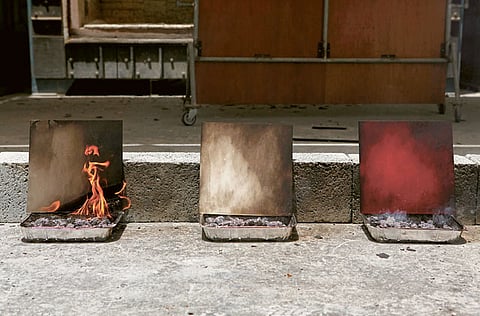Poor quality cladding tiles for buildings pose fire hazard
Expert cites lack of adequate building codes for exteriors of high-rises

Dubai A lack of adequate and up-to-date building codes for the exterior construction of high-rise buildings is adding to concerns that poor quality cladding is posing a significant fire hazard.
Only Abu Dhabi has an adequate written building code, while the other emirates have hastily-written regulations, Gulf News has learnt.
"The building codes and regulations seem to cover the insides of buildings quite well, but the exterior seems to have been missed," says Tom Bell-Wright, a consultant engineer who operates the only fire-safety and testing laboratory in the region.
Only about 10 per cent of the buildings constructed are actually tested to ensure that the materials used in the construction of their exteriors can stand up to the rigours of their lifespan," he says.
He points out that his company, for example, would never recommend to its clients that the materials used in the exterior of buildings were not fire resistant. "There is no legal requirement in the UAE [for that]," he says.
Call for ban
Alarm bells over the type of cladding used on high-rise buildings were raised when a twin tower project in Doha went up in flames in May 2006.
"We realised then that this cladding, which was relatively new then, was the problem that caused the flames to spread. We have been calling on a ban of non-flame retardant cladding since then."
Gulf News tested three cladding tiles at Bell-Wright's laboratory. The most commonly-used tile in the UAE and across the region burnt with relative ease when placed next to a small disposable barbecue. It's the same quality tile that covered the exteriors of the Al Baker and Al Tayer Towers in Sharjah that recently went up in flames.
Within seven minutes of being set on fire, the tile had buckled and was wicking heat upwards. After ten minutes of the non-scientific test, the fire-resistant tile only shows superficial smoke markings and is 13 degrees Celsius lower in temperature than the non fire-proof tile.
"You haven't even begun to look at the rest of the materials used in exterior construction," Bell-Wright says. "There's the blackjack sealant paint which is bitumen based.
"And then there's the insulation used between the cladding exterior and the building itself. How fire resistant are those materials?"
Sign up for the Daily Briefing
Get the latest news and updates straight to your inbox



